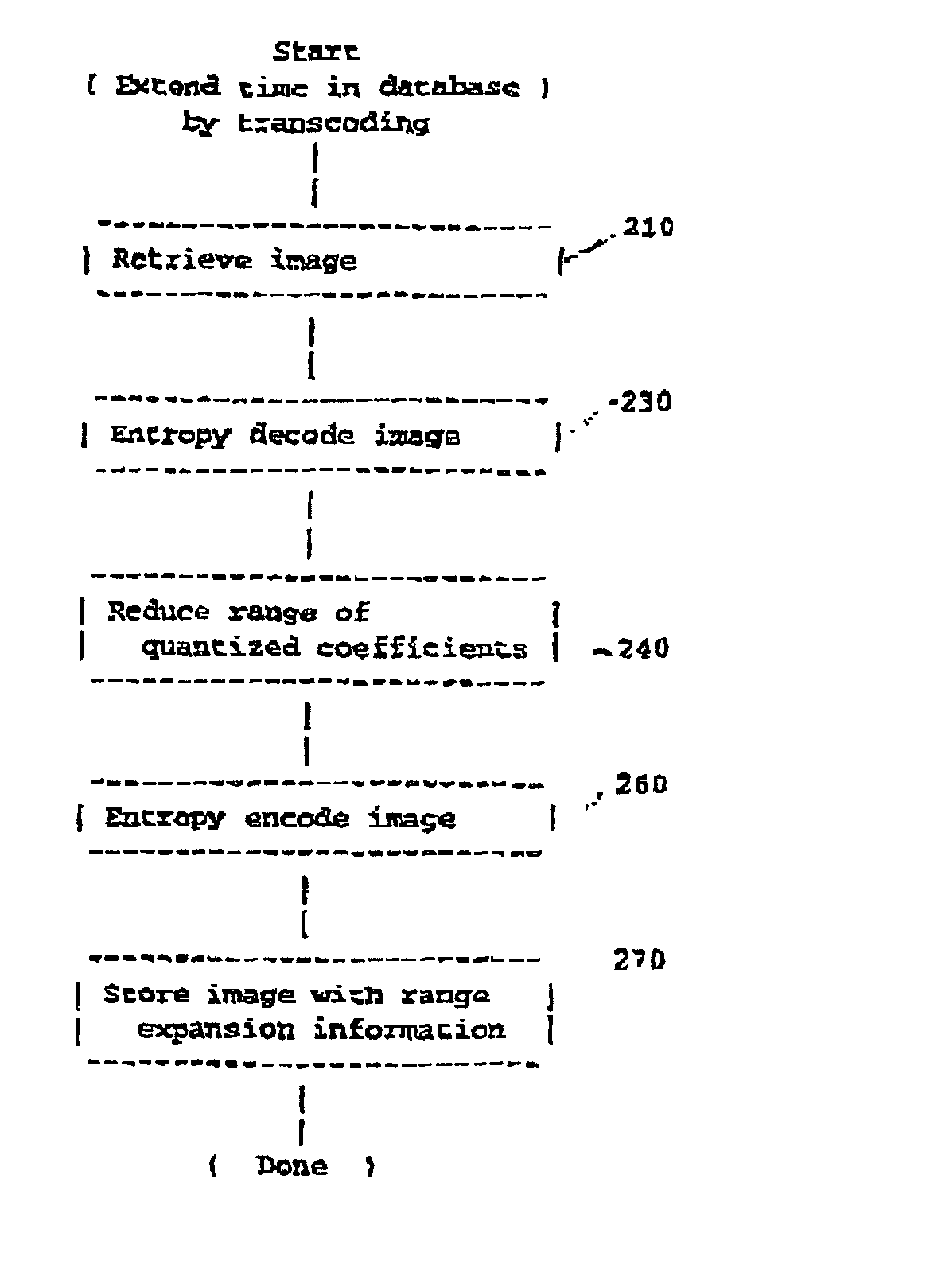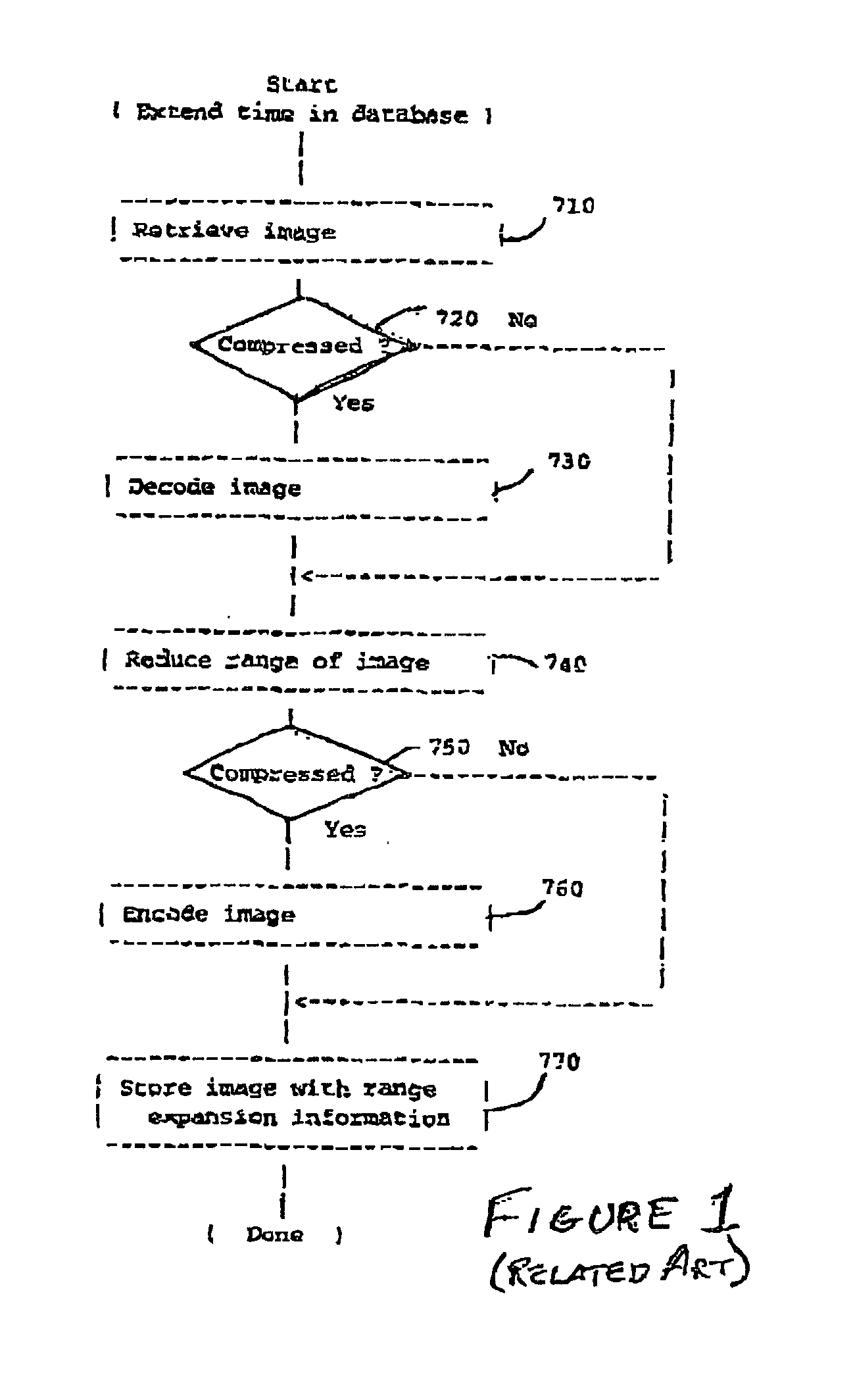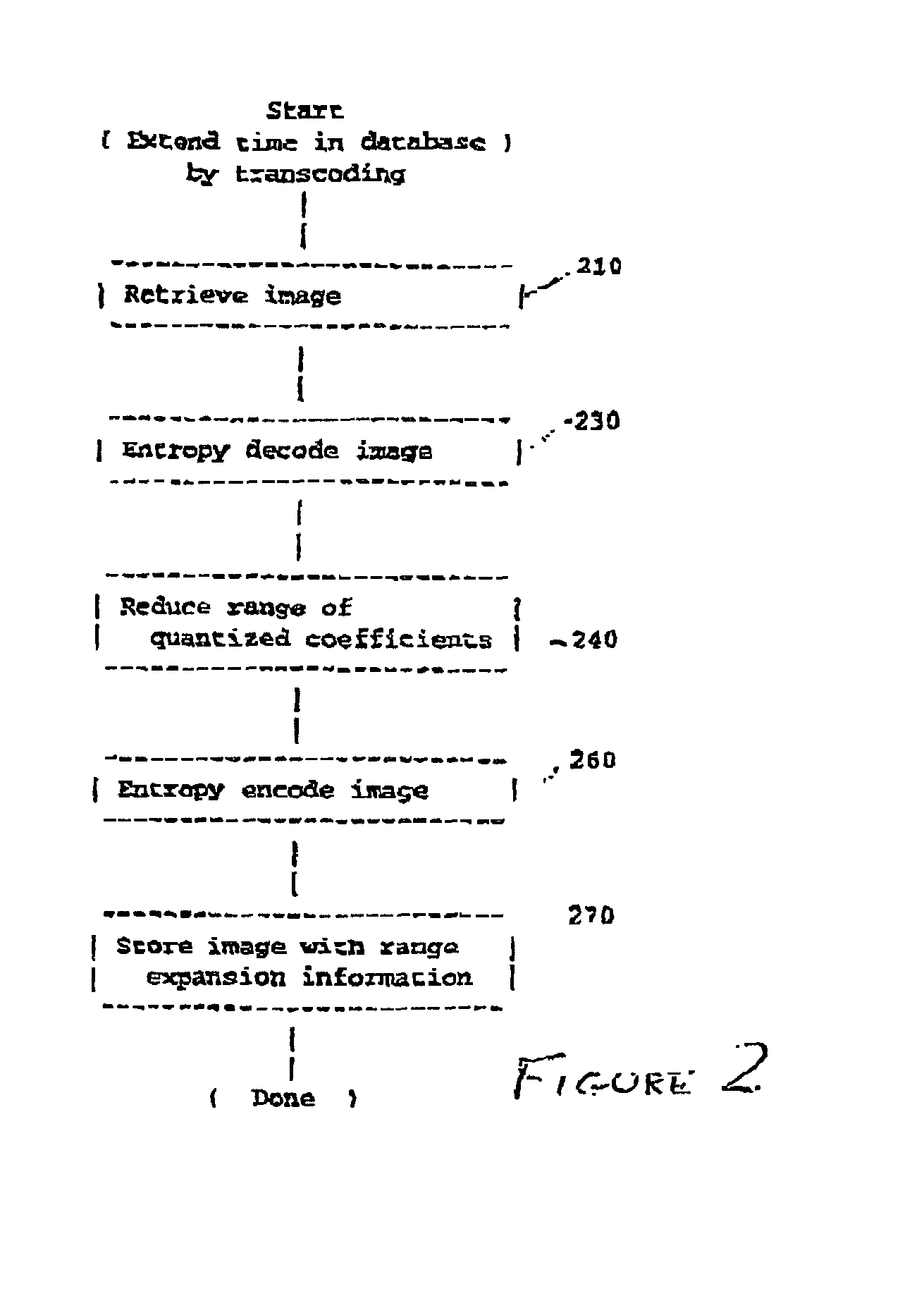Enhancing compression while transcoding JPEG images
a compression and enhancing technology, applied in the field of compression of image data, can solve the problems of presenting image data compression complexity, requiring severe trade-offs between image quality and data storage or transmission time, and errors remaining possibl
- Summary
- Abstract
- Description
- Claims
- Application Information
AI Technical Summary
Benefits of technology
Problems solved by technology
Method used
Image
Examples
Embodiment Construction
[0021] Referring now to the drawings, and more particularly to FIG. 1, there is shown a flow chart or high-level block diagram illustrating an exemplary technique of increasing the degree of compression of compressed image data. This Figure is substantially the same as FIG. 7 of the above-incorporated U.S. patent application Ser. No. 09 / 760,383, which is principally directed to an apparatus and method for producing increased compression of document image data to a much reduced volume while maintaining legibility and document image quality and compatibility with standard decoding processes and without post-processing. This function is accomplished by reducing the dynamic range of the image data, encoding the data of reduced dynamic range using a first quantization table and storing or transmitting the encoded image data with a different quantization table which restores the dynamic range of the original image data during otherwise conventional decoding. In particular, this Figure dep...
PUM
 Login to View More
Login to View More Abstract
Description
Claims
Application Information
 Login to View More
Login to View More - R&D
- Intellectual Property
- Life Sciences
- Materials
- Tech Scout
- Unparalleled Data Quality
- Higher Quality Content
- 60% Fewer Hallucinations
Browse by: Latest US Patents, China's latest patents, Technical Efficacy Thesaurus, Application Domain, Technology Topic, Popular Technical Reports.
© 2025 PatSnap. All rights reserved.Legal|Privacy policy|Modern Slavery Act Transparency Statement|Sitemap|About US| Contact US: help@patsnap.com



